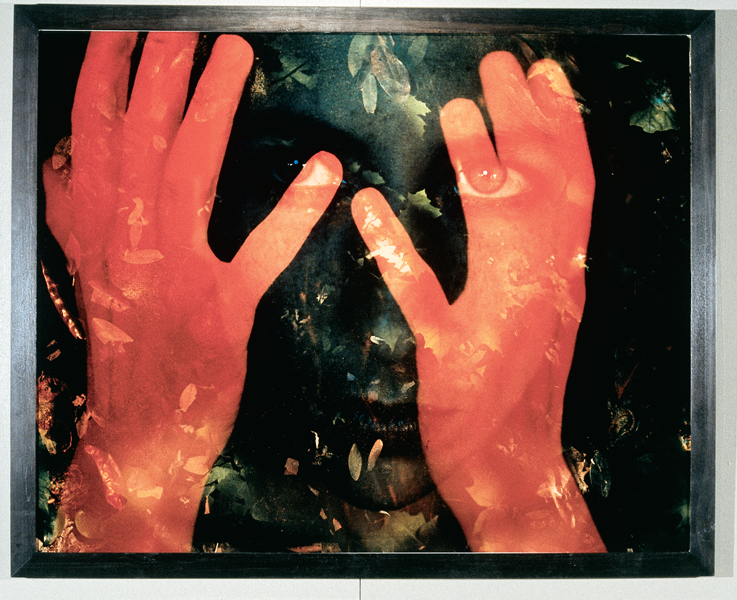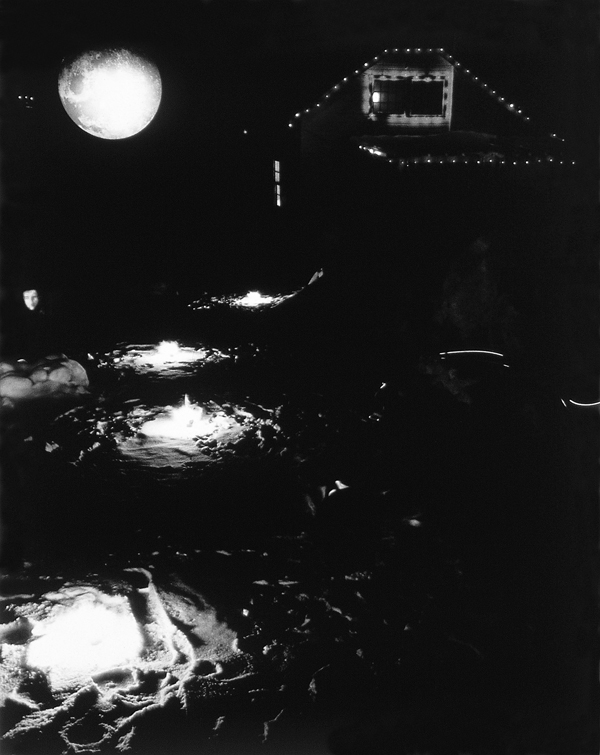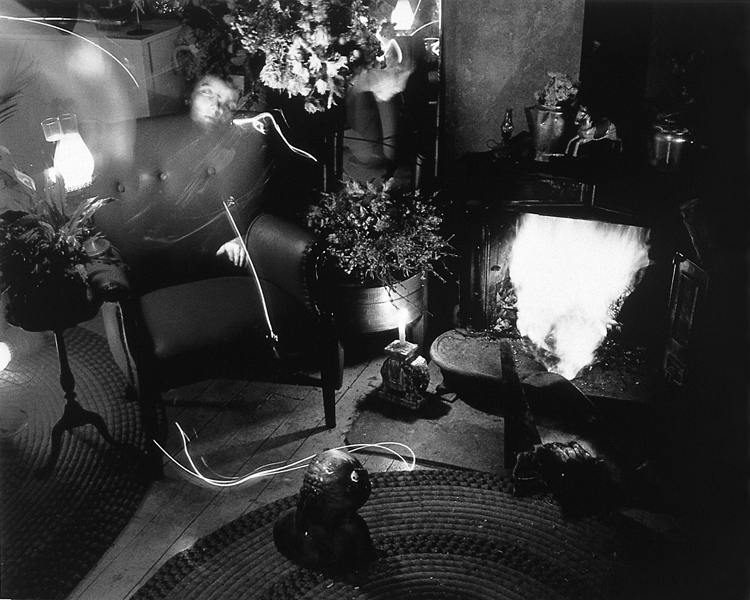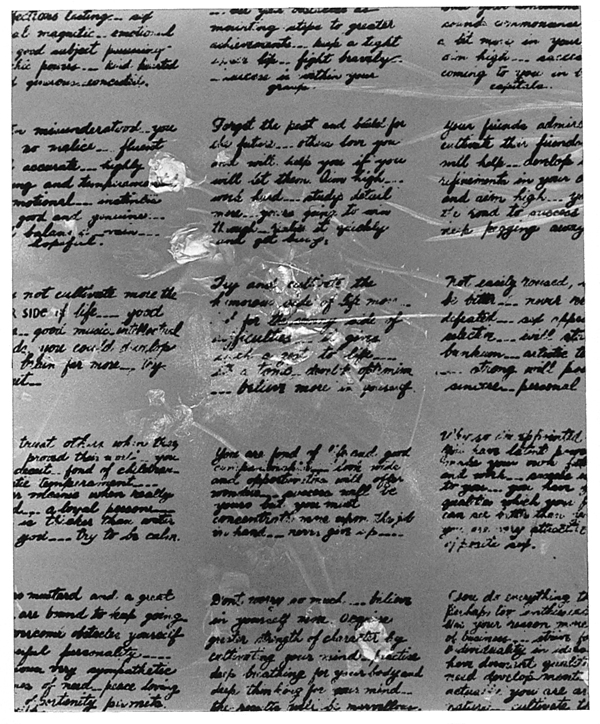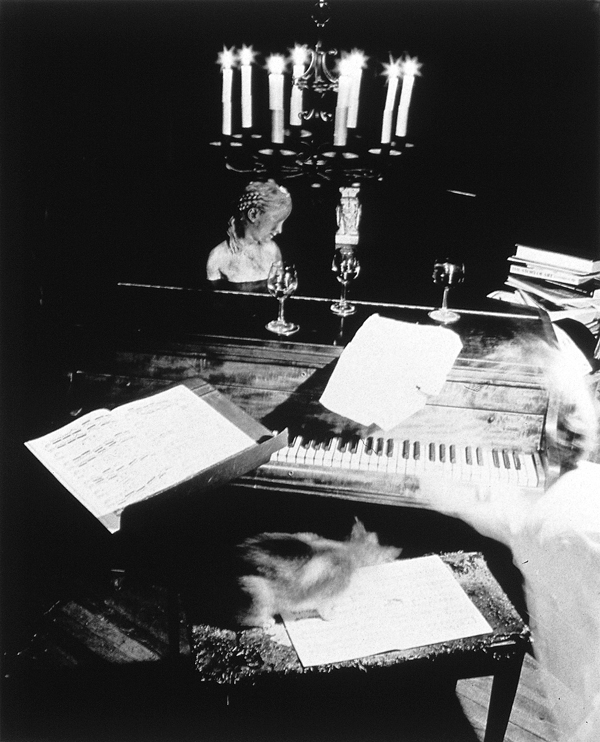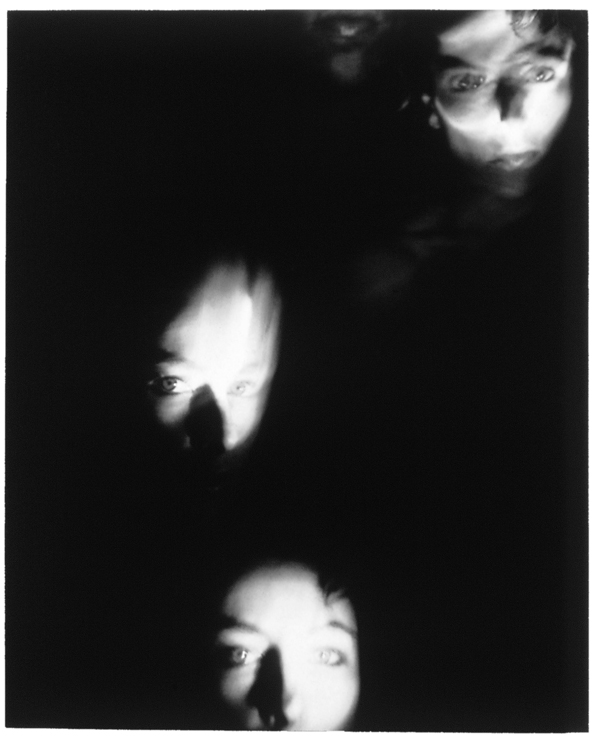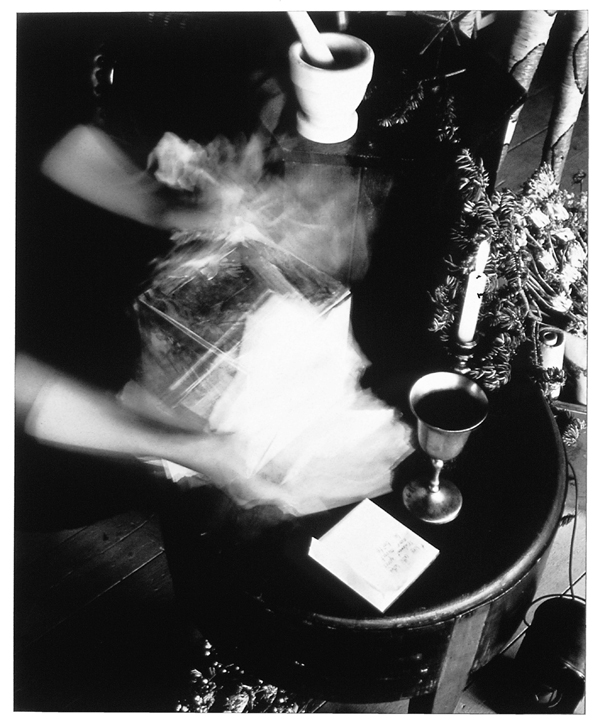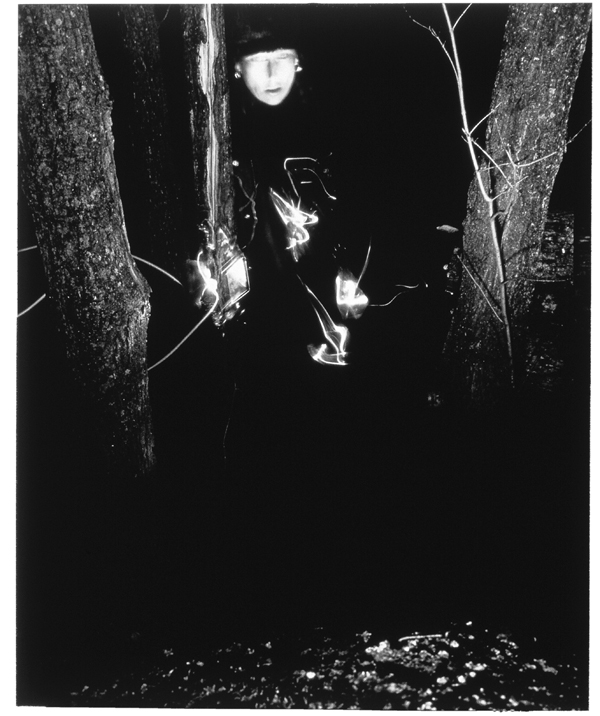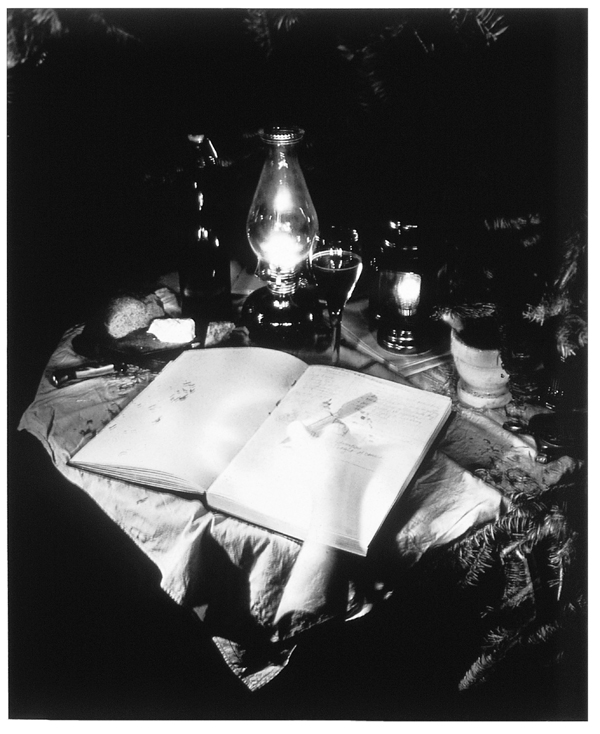[Spring 1997]
The self-portrait is the “secret scheme of all autobiography.” Here, in fact, the story of events experienced by the narrator is less important than is the portrait she offers of herself in action.
Organized in themes rather than along a narrative line, the self-portrait is constructed through a series of “reminders, returns, superimpositions, or correspondences between homologous and substitutable elements.”
by Sylvain Campeau
In these works by Anne-Marie Zeppetelli that claim to be self-portraits, the reminders, returns, and superimpositions seem, rather, to be palimpsests, results of superimpositions and long pauses during which phantoms are created, passersby arising from the difference in retention between their personal world and that of the photograph. It is almost as if these images contain the art of memory that Cicero talked of, in which meaningful but flowing images (the imagine) are imprinted on the sites forming the nomenclature of the mechanisms of memory (the loci). They offer, in effect, spaces that are framed, with a defined horizon – spaces that are probably known and familiar to the artist. The undergrowth in the exteriors – clearings, lakeshores, and others, always nocturnal sites – reveal a nature that is close and secret. The interiors are a kitchen, a dining room, a living room, a guest room, decorated unpretentiously. The rooms are crammed with objects each of which is a sign, knick-knacks and little gewgaws that one never gets rid of and that here are signs of the familiar, props in a carefully prepared scene, overly full of meaningful intent, attempting to indicate that all of this belongs to the everyday, obeys a temporal order in which each day is marked by a new curio, as an “X” marks off the passage of time.
As well, there are many references to inscription: in “Birthday” and “Ritual,” reproductions of written texts are paired with scenes in which vaguely incorporeal hands write or peel back manuscript pages. To these are added more typically photographic traces: marked with light, with a body or face passing into the rectangle of the viewfinder. All of this occurs as if it is within the flow of time in which these stories are inscribed. There is no narrative, it is true; but there is a chronology. Nevertheless, this is a time without history, a time when faces, limbs, and bodies whisk by. None of these images seems destined to remain. They are enhaloed with blurs, with brightly coloured lights that clearly show that they have been inserted, are foreign to the surface on which they rest – similar to the multiple bodies of a single person, a self-portrait of the artist immersed in the image, the multiplied apparitions in “Les Yeux d’Anna.”
The references to inscription form a close relationship between writing and photographic crystallization. Both bespeak the question of permanent traces. The background of the photographic writing is composed of charm-bracelet charms, little geegaws that are, however, full of a meaning that has been appropriated for them. They are markers, empty for us but meaningful to the artist, filled with a meaning that we know is there, without knowing exactly what it is. Against this background, a being in thrall to time passes, as on a stage that that will not hold it or remember it, that will not apprehend it; a stage where its presence constantly threatens to be simply a decoy, a fleeting impression, the trace of a passing angel. This being is Anne-Marie Zeppetelli herself, who thus makes a letter of her body.
Anne-Marie Zeppetelli has a master’s degree in photography from Concordia University in Montreal. She has received a number of grants from the Canada Council for the Arts and her works were featured in the exhibition À suivre... at Mois de la Photo à Montréal in 1995. She has also shown in a number of Montreal galleries, including Dazibao and Galerie Chantal Boulanger.
An art critic, essayist, independent curator, and poet, Campeau was curator of the exhibition À suivre… at the last Mois de la Photo à Montréal. Also in 1995, he took part in “Light Year,” a photographic event in Winnipeg. His last monograph, Chambres obscures – photographie et installation, was published by Éditions Trois in 1995.

